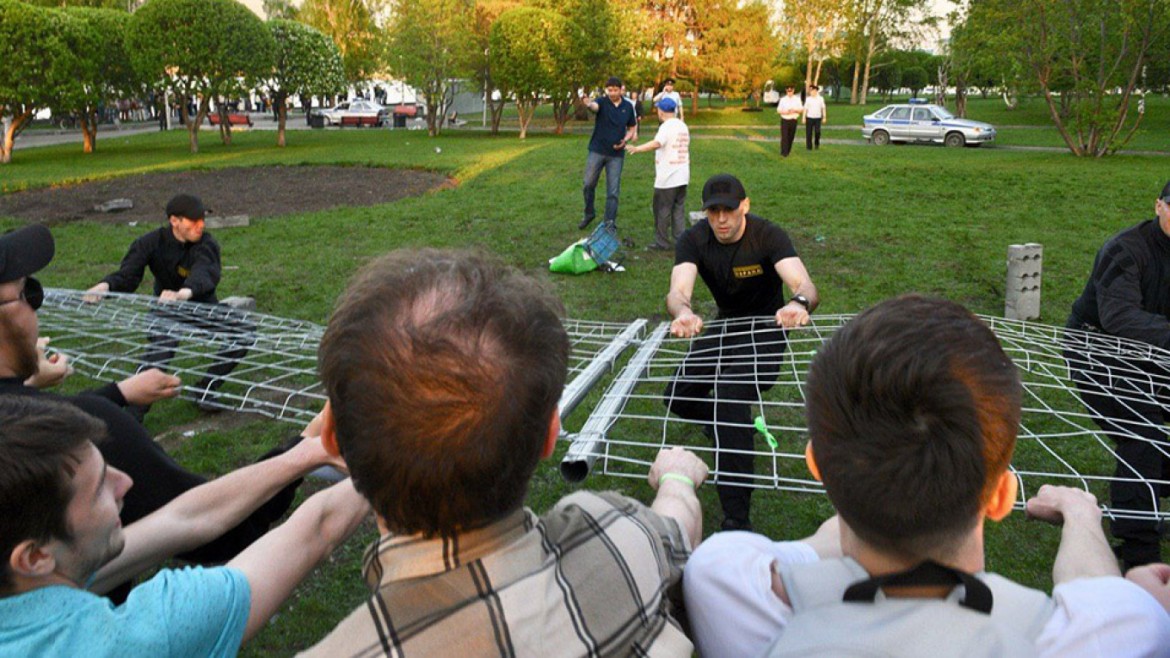Analysis
Russia’s environmentalist and anticlerical youth revolt echoes Occupy
Hundreds of young people are protesting the construction of a church in a public green space in Yekaterinburg, capital of the Urals. They are worrying Putin and disrupting a lucrative business for a pair of construction magnates.

Environmentalist, anti-clerical and radical: the first great Russian youth movement of the 21st century has made its grand appearance in Yekaterinburg—the capital of the Urals and the birthplace of Boris Yeltsin—protesting against the construction of an Orthodox cathedral in a downtown square.
The Cathedral of St. Catherine the Great was built in 1723, when the city was founded, and was demolished by the Soviet Union in 1930, during one of the anti-religious campaigns at the time. In 2010, with the support of the Mayor of Yekaterinburg, the Orthodox Church started the project for its rebuilding, to be completed in time for the 300th anniversary of its original construction.
This, however, is only part of the story. The benefactors who are financing this project, which will cost over $70 million, are Igor Altushkin (cotton industry magnate) and Andrey Kozitsyn (the boss of the metallurgical industry in the Urals), who have a long history of lucrative business with the Moscow Patriarchate.
Kozitsyn has paid for the restoration of Valaam Monastery, Vladimir Putin’s own favorite, and he has a hand in many foundations that manage the construction of churches across the country. Likewise, Altushkin—worth $4.4 billion, according to Forbes—himself a sponsor of Church projects, was rewarded for his religious fervor with 60 billion rubles ($930 million) in financing from Gazprombank to open a large metallurgical industrial plant in Chelyabinsk. In other words, business was going smoothly as usual—if it hadn’t been for the meddling kids in Yekaterinburg.
The local October Square, which has been chosen as the location to build the gargantuan 250-foot-tall concrete structure, is known among the city’s youth simply as “the square.” Adorned with lush greenery and a beautiful artificial lake, it has always been the favorite meeting spot for young people in Yekaterinburg on summer evenings.
That is the reason why last Monday, when fences started being raised around the square in preparation for the construction work, word spread quickly via social media, and by evening thousands of young people had mobilized at the spot. “To make way for the church, 200 trees will be cut down, and a whole green area will be cemented over,” complained a young woman in an interview on a local TV station, asked about why they had mobilized. A friend of hers added: “We are not anti-religion, but there are already 4-5 large churches in the center. Another one is useless.”
The mobilization has continued to grow each evening, transforming into a scene in itself, a recurring flash mob, with a far greater scope than it had at the beginning. Young people are playing music, dancing and drinking beer, in a place that—despite the orders by the police to clear out—has become a liberated space. Every time, they are breaking down the fences, even though the next day these are put up again, even higher and sturdier.
These protests seem to be worrying Putin quite a lot. On Thursday night, after the local mayor’s alternating blandishments and threats failed yet again to stop the protests, the Kremlin leader spoke out personally on the issue, in a TV interview. He blamed “the professional agitators who came from Moscow” for the protests, and claimed that “the solution to the problem will have to be decided by a poll of the entire population affected,” and not by “a vocal minority”: words that had no other effect than to persuade the young people from the Urals that they were on the right path.
Meanwhile, their peaceful mobilization was hit by an unprecedented crackdown. Over 100 people have been detained by the police on misdemeanor charges and handed sentences of one or two weeks imprisonment or enormous fines—of over $40,000 in one case, as a girl named Marina reported on Facebook. Furthermore, seven young people are facing criminal charges.
“It’s a modern movement,” says sociologist Boris Kagarlitsky, “which reminds us of Occupy New York and the Gezi Park movement in Istanbul. No leader, peer-to-peer communication, concrete objectives.” Indeed, the young people one can see every evening in the live broadcasts on the Dozd TV channel are shockingly similar to their “Western” peers. “They listen to the same indie-rock music, they wear the same hoodies and sneakers, and they don’t see a bright future ahead of them either,” stresses Kagarlitsky.
They are one of the thousands of threads coming together in an emerging global struggle.
Originally published at https://ilmanifesto.it/ecologista-e-anticlericale-rivolta-giovanile-negli-urali/ on 2019-05-18
